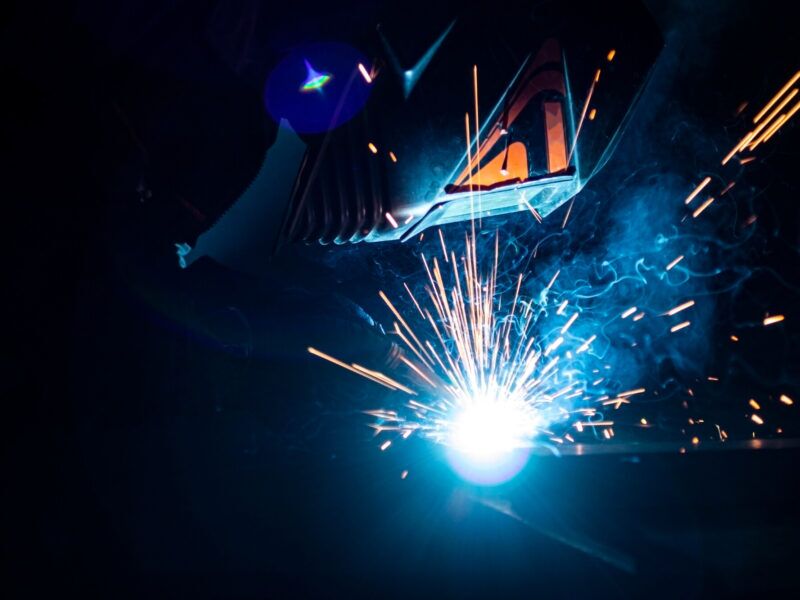Best Practices for Preventing Weld Undercut: Grasping the Essentials
Best Practices for Preventing Weld Undercut: Grasping the Essentials
Blog Article
A Comprehensive Overview to Identifying, Stopping, and Repairing Undercut Welding Troubles in Your Welding Tasks
In the world of welding, running into undercut issues is a typical difficulty that can endanger the architectural stability and general top quality of your welding projects. Keep tuned as we explore the essential parts of recognizing, protecting against, and fixing undercut welding problems, providing you with beneficial insights and approaches to raise your welding abilities to the next level.
Typical Reasons of Undercut Welding
Undercut welding, a common concern in welding processes, can be caused by numerous variables that need to be meticulously recognized and addressed to guarantee the honesty of the weld joint. One of the primary causes of undercut welding is excessive warm input.
An additional common cause of undercut welding is inappropriate welding technique. Determining these root triggers and executing restorative procedures is essential in stopping and remedying undercut welding issues in welding tasks.
Identifying Undercut in Welds

To determine undercut properly, appropriate illumination and zoom devices are vital to evaluate the weld joint extensively. Using devices such as a welding scale or a magnifying glass can help in identifying even the tiniest undercut flaws. Additionally, running a finger or a fingernail along the weld joint can in some cases expose undercut, as the surface area may feel unequal or have a dip where the undercut exists.
Safety Nets for Undercut
Having a deep understanding of the sources of undercut in welds enables the application of reliable preventive steps to preserve weld high quality and stability. One critical preventative measure is proper weld joint preparation. Making certain that the sides are tidy, devoid of contaminants, and properly beveled can dramatically decrease the likelihood of undercut (Preventing weld undercut). Additionally, selecting the appropriate welding criteria, such as voltage, current, and take a trip speed, is important. These settings should be maximized to avoid excessive warm input, which can cause damage formation.

Techniques for Repairing Undercut

To resolve undercut problems successfully, welders can utilize specific strategies intended at fixing the flaw and bring back the stability of the weld joint. One strategy is to adjust the welding specifications, such as the voltage, current, and take a trip rate, to make certain appropriate heat input and blend. Enhancing the welding existing or decreasing the traveling speed can assist fill out the undercut. Additionally, altering the welding method from a push to a drag or vice versa can additionally help minimize undercut.
An additional method is to utilize a weaving movement while welding to guarantee proper sidewall combination and fill in the undercut. By oscillating the welding arc from side to side within the weld joint, the welder can transfer more filler material right into the undercut locations, successfully removing the flaw.
Furthermore, grinding out the undercut and rewelding the joint can be a feasible solution for much more extreme undercut problems - Preventing weld undercut. This process entails getting rid of the undercut area, preparing the base steel, and after that rewelding the joint with proper welding parameters and methods to avoid undercut from persisting

Expert Tips for Staying Clear Of Undercut
Using correct welding methods and maintaining control over essential welding parameters are important methods for welders aiming to avoid undercut in their weld joints. One specialist pointer for preventing undercut is to make sure proper joint prep work. This involves cleaning up the base metal completely to eliminate any impurities that can lead to damage development. Additionally, selecting the appropriate welding procedure and filler metal for Bonuses the specific application can aid stop undercut. Welders must also pay attention to the check welding current and voltage setups, guaranteeing they are within the recommended variety to prevent overheating and possible undercut. Maintaining a consistent traveling speed during the welding procedure is one more essential tip to stop undercut. By moving at a steady speed, welders can ensure proper combination and reduce the likelihood of undercut development. Evaluating the weld bead after completion can aid identify any kind of indications of undercut very early on, allowing for prompt corrective activity to be taken.
Final Thought
In final thought, identifying, avoiding, and fixing undercut welding problems in your welding tasks is critical for making sure resilient and strong welds. Preventing weld undercut. By comprehending the typical reasons of undercut, being able to determine it in welds, implementing safety nets, and making use of appropriate methods for dealing with undercut, you can avoid potential concerns and produce high-quality welds. Complying with professional tips for preventing undercut can aid you improve your welding abilities and generate better results in your jobs
Undercut welding, a typical issue in welding procedures, can be triggered by numerous variables that require to be meticulously recognized and resolved to make sure the honesty of the weld check my source joint. Furthermore, running a finger or a finger nail along the weld joint can in some cases reveal undercut, as the surface area may feel unequal or have a dip where the undercut exists.
Making use of proper welding strategies and preserving control over key welding criteria are essential techniques for welders intending to protect against undercut in their weld joints.In final thought, determining, preventing, and dealing with undercut welding problems in your welding tasks is important for ensuring solid and long lasting welds. By recognizing the usual causes of undercut, being able to recognize it in welds, applying preventative steps, and using appropriate methods for taking care of undercut, you can avoid potential issues and develop top quality welds.
Report this page